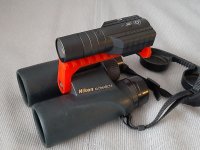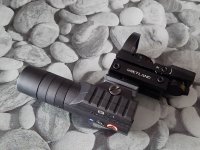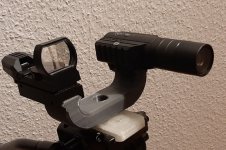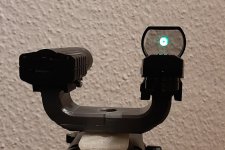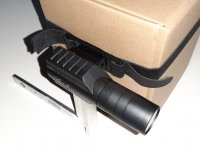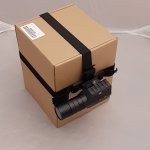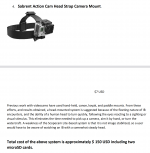Hi John,
Thanks, looks entirely reasonable with regard to the 16 mm lens ... just as expected, it's too short for good pictures.
I'm not sure what the maximum resolution of the standard scopecam is, but if it can be increased by reducing the frame rate, I'd suggest to try that, too. (I bought the 4K version, which I think would be better for your purposes as well, if it's affordable within your budget.)
Here's the improved version of my head-mount with the cross strap:
View attachment 1432188
Note that it's worn on one side of the head rather then on the forehead (as the GoPro style actioncam in your summary), as the form factor is different.
The cross strap should not be elastic (as in my example), but the kind of textile used by backpack straps etc., as elastic still leaves the camera a bit bouncy.
I'll add an aiming device next.
Regards,
Henning






